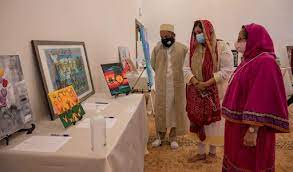
Cultural aspects of the Dawoodi Bohras Life

Dawoodi Bohra Shia Muslims trace their heritage to the Fatimi Imams, direct descendants of the Prophet Mohammed, in Egypt and this fact affects the cultural aspects of the Dawoodi Bohras life significantly. The Dawoodi Bohras all through the world are guided by their leader called “al-dai al-mutlaq” (unrestricted missionary), who first operated from Yemen and then, within the last 450 years, from India.
The Dawoodi Bohras today are generally highly educated, thriving business people and qualified professionals in different fields. Aggregating around 1 million members, the Dawoodi Bohras have settled in over 40 countries across the world to practice their faith and lead meaningful and prosperous lives. Most Dawoodi Bohra community members reside in India with large congregations also in Pakistan, Yemen, East Africa, and the Middle East as well as growing populations in Europe, North America, South East Asia, and Australia.
In the following articles, we are going to learn more about their culture and traditions.
Language
A unique cultural hallmark of the Dawoodi Bohra community is its specific language, “Lisan al-Dawat”. It is a language combining elements of Arabic, Persian, Urdu, and Gujarati, which began to emerge about a millennium ago, when the Dawat (mission) originally came to Gujarat, India through missionaries of the Fatimid Imams.
Following the community’s philosophy of blending venerated traditions with modern innovations, Lisan al-Dawat is a language that preserves the Dawoodi Bohras’ cultural and spiritual roots along with evolving with the needs of the age.
Lisan al-Dawat takes its basic syntax and structure from the Gujarati language, but its script and a substantial part of its vocabulary carry with Arabic words. These elements give an Islamic dimension to it that has facilitated the understanding of Quranic values and Fatimid heritage. For the community, it is a medium that permits it to articulate its Islamic roots as well as serving as a link to its Indian heritage. Arabic is still the community’s lingua franca for religious scholarship and literature, but Lisan al-Dawat is its language in sermons as well as discourses and the medium of both official and daily communication.
Dress
Dawoodi Bohras have a distinct form of community costume. Men traditionally wear a predominantly white three-piece outfit and a cap with golden designs called a topi. Women wear a two-piece dress called the rida distinguishable from other kinds of hijab by its bright colors, decorative patterns, and lace.
In the next article, we will discuss other features of the Dawoodi community.